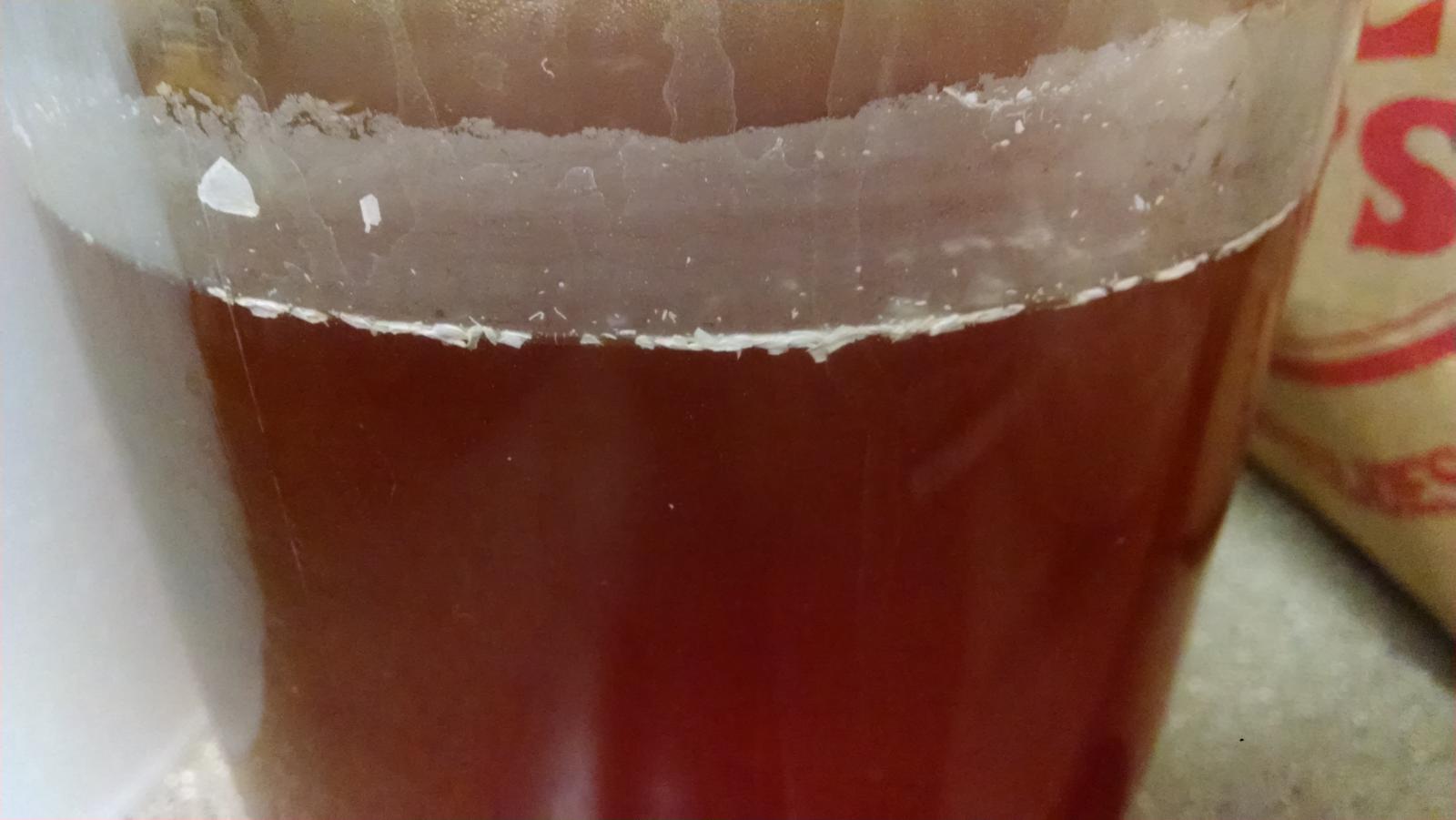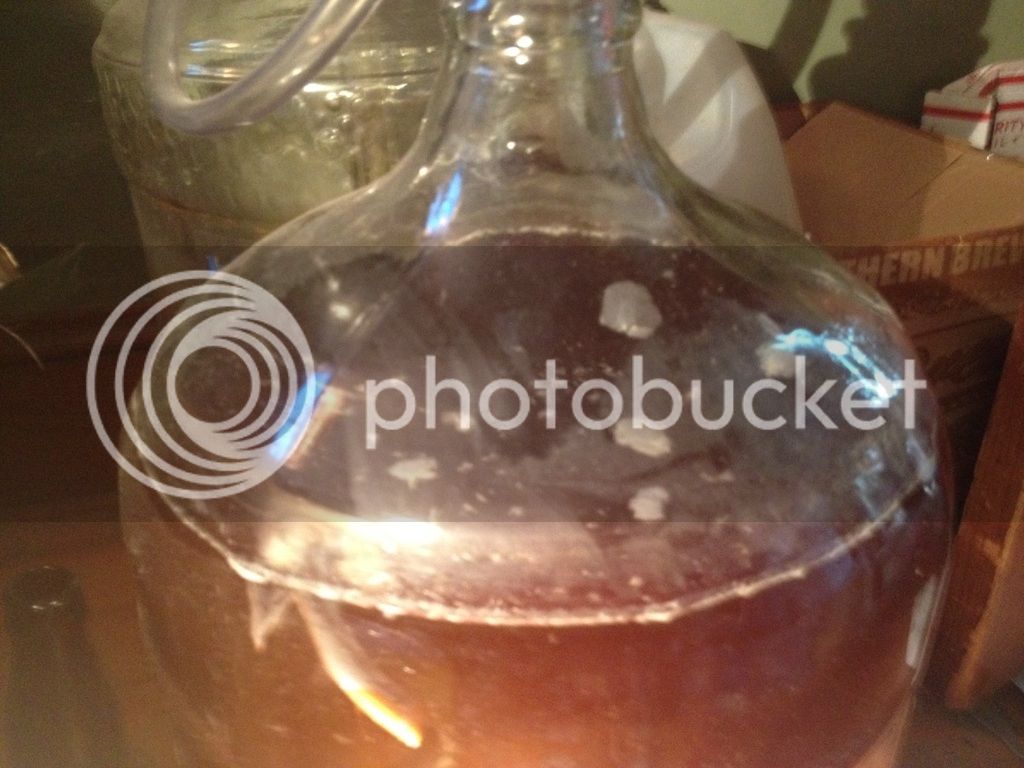I think it may be a side effect of my temperature sensor placement. I have it taped to the side of the carboy under some insulation. I used a infrared thermometer to measure temperature above and below that layer - it's 67 vs 70. I moved the sensor up to the top of the liquid.
You are using an out of date browser. It may not display this or other websites correctly.
You should upgrade or use an alternative browser.
You should upgrade or use an alternative browser.
Post your infection
- Thread starter jcarson83
- Start date

Help Support Homebrew Talk:
This site may earn a commission from merchant affiliate
links, including eBay, Amazon, and others.
Once in a while I check the accuracy of my temp strips with my all-temp laser thermometer. Usually within tenths of a degree.
I was planing to dry hop at 1.010 and keg it at 1.008.You've still got quite a bit of krausen on that beer, and given the gravity readings, it's not done yet. Expecting around 1.010-1.012 perhaps?
When I take my readings I use the tap at the bottom. Of course there's some air going in to compensate for the volume loss.Also, each time you lift the lid you let air in and CO2 out, and airborne bugs could get inside and fester. Although 9 days is a decent time, it's best to let it go for 2-3 weeks before even taking the first sample. Instead of lifting the lid, you can snake a 1/4" OD tube down the grommet hole and siphon some beer out for a test. That keeps the fermentor most sanitary. Spray Starsan around and underneath the grommet hole, before removing the airlock.
Since I'm still using the Coopers fermenter the air won't go through an airlock or anything like that... that might indeed be the problem.
(got it a long time ago from brewuk.co.uk . I believe it's the same as the Mr Beer Craft BrewMax 6gal, which seems to be well known here.)
I'm just worried that if it keeps growing in the (brand new 5l mini-) kegs I will neither be able to see any growth nor clean it properly afterwards . Therefore ruining my next brew, my new kegs.. or both :/I'd let it ride for another week and take it from there, but it may turn more sour. Or drink as-is, ASAP. At 1.015 it will still be pretty sweet.
Anyways, thanks for your thoughtful reply.
I was planing to dry hop at 1.010 and keg it at 1.008.
When I take my readings I use the tap at the bottom. Of course there's some air going in to compensate for the volume loss.
Since I'm still using the Coopers fermenter the air won't go through an airlock or anything like that... that might indeed be the problem.
(got it a long time ago from brewuk.co.uk . I believe it's the same as the Mr Beer Craft BrewMax 6gal, which seems to be well known here.)
I'm just worried that if it keeps growing in the (brand new 5l mini-) kegs I will neither be able to see any growth nor clean it properly afterwards . Therefore ruining my next brew, my new kegs.. or both :/
Anyways, thanks for your thoughtful reply.
I would give it another week and see what it tastes like before spending money on dry hopping. If it's sour indeed you may want to dump it, decide to drink it as is, or even let it go for another 6 months, if you're into sours.
I'm surprised it isn't closer at FG already. Did you aerate the wort well before pitching? What yeast did you use? If dry yeast, was it rehydrated? What was the fermentation temp?
Many of us only dry hop after the yeast has flocced out, and even cold crash before doing so.
Using the spigot is better than removing the lid. But that spigot and hole area should be cleaned and sanitized thoroughly after and before each use, including the nut and rubber washer, it can harbor bugs over time. You beer may be fine, but if you can taste a sourness already, there's not much you can do. The "bugs" live in the beer, the pellicle on top is just a side effect. It maybe a wild yeast.
To clean infected equipment it needs to be cleaned very thoroughly and soaked in bleach water for a few days. Then after dumping the bleach water, putting it out in the sun for a few days irradiates it nicely too. The crevices, like your spigot, can harbor the infection and needs manual scrubbing and sanitizing.
Anything that has touched your infected beer needs serious cleaning and sanitation, again, surfaces that aren't smooth need special attention. So there is a risk the infection transfers when using the mini kegs. I've never used them, don't know how easy and well they can be cleaned and sanitized.
Seeing you're in Germany, what kind of sanitizer do you use?
I've Aerated it as well as I can without specialized equipment (By stiring). I used 15g of dry yeast which I had rehydrated and pitched at roughly 27°C. The temperature dropped to 21-22° and remained constant. The first layer of foam was well visible within 12 hours.I'm surprised it isn't closer at FG already. Did you aerate the wort well before pitching? What yeast did you use? If dry yeast, was it rehydrated? What was the fermentation temp?
Currently I use just Chemipro Oxi. I use it before and after every brew. I usually disassemble and mechanically clean the small parts (tap and such) and leave them in the solution as long as it takes to clean and sanitize the bigger parts.Many of us only dry hop after the yeast has flocced out, and even cold crash before doing so.
Using the spigot is better than removing the lid. But that spigot and hole area should be cleaned and sanitized thoroughly after and before each use, including the nut and rubber washer, it can harbor bugs over time. You beer may be fine, but if you can taste a sourness already, there's not much you can do. The "bugs" live in the beer, the pellicle on top is just a side effect. It maybe a wild yeast.
To clean infected equipment it needs to be cleaned very thoroughly and soaked in bleach water for a few days. Then after dumping the bleach water, putting it out in the sun for a few days irradiates it nicely too. The crevices, like your spigot, can harbor the infection and needs manual scrubbing and sanitizing.
Anything that has touched your infected beer needs serious cleaning and sanitation, again, surfaces that aren't smooth need special attention. So there is a risk the infection transfers when using the mini kegs. I've never used them, don't know how easy and well they can be cleaned and sanitized.
Seeing you're in Germany, what kind of sanitizer do you use?
Just like you suggested in another thread I'll combine this with a non-rinse surface sanitizer (Just ordered a bottle of star san) for my next batch.
Shouldn't adding the additional hops (earlier than planned) make life harder for the bugs?
I've Aerated it as well as I can without specialized equipment (By stiring). I used 15g of dry yeast which I had rehydrated and pitched at roughly 27°C. The temperature dropped to 21-22° and remained constant. The first layer of foam was well visible within 12 hours.
Currently I use just Chemipro Oxi. I use it before and after every brew. I usually disassemble and mechanically clean the small parts (tap and such) and leave them in the solution as long as it takes to clean and sanitize the bigger parts.
Just like you suggested in another thread I'll combine this with a non-rinse surface sanitizer (Just ordered a bottle of star san) for my next batch.
Shouldn't adding the additional hops (earlier than planned) make life harder for the bugs?
27C is pretty high for pitching ale yeasts, but it won't kill them. I'd look into pitching closer to your actual fermentation temps, and keep those on the low end of the range for the yeast you're using, at least for a week or better, two. After that you can raise the temps a bit to finish out, and condition (clean up off flavors). There's a ton on info on how to keep the temps in the fermentor low. A large plastic bin filled with water and dosed with frozen water bottles is one example. Swamp cooler is another, as is a fridge or freezer with an external temp controller. It makes better beer with less of flavors.
Now that has nothing to do with the apparent infection you're experiencing. The lack of proper sanitation, is likely the culprit. Chemipro Oxi is NOT a sanitizer.
Glad you were able to obtain a bottle of Starsan, it's marvelous stuff. You can make small quantities (quart) and fill a spray bottle with it. A syringe will help to measure the fractional amount of concentrate needed. Keeping a small bucket (1/2 - 1 gallon) of Starsan around with a small washcloth soaked in it is great for mopping sides of buckets and lids, and soaking small parts, like spigots, even racking hoses.
Keep us posted on the progress of your current IPA batch. I had a sour IPA that was not bad at all. The sourness was light, and there was plenty of body and sweetness left to compensate and keep the bitter and hoppy profile palatable.
Only lacto is severely hampered by hops, most wild yeasts not as much. How is the flavor, apart from sourness? Some wild yeasts can make yummy beer, although sadly, many don't. It's much harder to fight an established infection than preventing it from taking a foothold (Starsan!). If it's ends up to be a dumper, extra dry hops won't cure it. Save them for the next batch.

$53.24
1pc Hose Barb/MFL 1.5" Tri Clamp to Ball Lock Post Liquid Gas Homebrew Kegging Fermentation Parts Brewer Hardware SUS304(Gas MFL)
Guangshui Weilu You Trading Co., Ltd

$7.79 ($7.79 / Count)
Craft A Brew - LalBrew Voss™ - Kveik Ale Yeast - For Craft Lagers - Ingredients for Home Brewing - Beer Making Supplies - (1 Pack)
Craft a Brew

$10.99 ($31.16 / Ounce)
Hornindal Kveik Yeast for Homebrewing - Mead, Cider, Wine, Beer - 10g Packet - Saccharomyces Cerevisiae - Sold by Shadowhive.com
Shadowhive

$20.94
$29.99
The Brew Your Own Big Book of Clone Recipes: Featuring 300 Homebrew Recipes from Your Favorite Breweries
Amazon.com

$22.00 ($623.23 / Ounce)
AMZLMPKNTW Ball Lock Sample Faucet 30cm Reinforced Silicone Hose Secondary Fermentation Homebrew Kegging joyful
无为中南商贸有限公司

$44.99
$49.95
Craft A Brew - Mead Making Kit – Reusable Make Your Own Mead Kit – Yields 1 Gallon of Mead
Craft a Brew

$719.00
$799.00
EdgeStar KC2000TWIN Full Size Dual Tap Kegerator & Draft Beer Dispenser - Black
Amazon.com

$76.92 ($2,179.04 / Ounce)
Brewing accessories 1.5" Tri Clamp to Ball Lock Post Liquid Gas Homebrew Kegging Fermentation Parts Brewer Hardware SUS304 Brewing accessories(Gas Hose Barb)
chuhanhandianzishangwu

$176.97
1pc Commercial Keg Manifold 2" Tri Clamp,Ball Lock Tapping Head,Pressure Gauge/Adjustable PRV for Kegging,Fermentation Control
hanhanbaihuoxiaoshoudian

$28.98
Five Star - 6022b_ - Star San - 32 Ounce - High Foaming Sanitizer
Great Fermentations of Indiana

$479.00
$559.00
EdgeStar KC1000SS Craft Brew Kegerator for 1/6 Barrel and Cornelius Kegs
Amazon.com

$58.16
HUIZHUGS Brewing Equipment Keg Ball Lock Faucet 30cm Reinforced Silicone Hose Secondary Fermentation Homebrew Kegging Brewing Equipment
xiangshuizhenzhanglingfengshop

$159.99 ($26.66 / Count)
3M High Flow Series System BREW120-MS, 5616001, For Brewed Coffee and Hot Tea, Valve-in-Head Design
SpaceCityProviders

$53.24
1pc Hose Barb/MFL 1.5" Tri Clamp to Ball Lock Post Liquid Gas Homebrew Kegging Fermentation Parts Brewer Hardware SUS304(Liquid Hose Barb)
yunchengshiyanhuqucuichendianzishangwuyouxiangongsi

$33.99 ($17.00 / Count)
$41.99 ($21.00 / Count)
2 Pack 1 Gallon Large Fermentation Jars with 3 Airlocks and 2 SCREW Lids(100% Airtight Heavy Duty Lid w Silicone) - Wide Mouth Glass Jars w Scale Mark - Pickle Jars for Sauerkraut, Sourdough Starter
Qianfenie Direct
After some further research in the past days i realized that too.
My brewery equipment dealer told me I'd be good if i use just Chemipro Oxi. never trust a single source i guess...
There Seem to be more and more european and german resellers for five star products.
In case anyone is wondering: I've ordered it here but there's also brouwland and others.
When I took the first reading it was very promising. Actually so far the most promising I had. No sourness, decent hop bitterness and still quite sweet of course.
The sourness in the second sample was not overwhelming but very much noticeable. so i hope it'll turn out ok-ish. I'll keep you posted when i take the next sample. Btw, it's going to be (sour-)APA not IPA. That will be my next project.
Since I'm pretty inexperienced as a brewer it's hard to give a decent/useful description (especially since I don't really know how wort/green beer and all the other intermediate steps should taste for certain styles).
Thanks for the link and all the other input. It's much appreciated.
My brewery equipment dealer told me I'd be good if i use just Chemipro Oxi. never trust a single source i guess...
There Seem to be more and more european and german resellers for five star products.
In case anyone is wondering: I've ordered it here but there's also brouwland and others.
When I took the first reading it was very promising. Actually so far the most promising I had. No sourness, decent hop bitterness and still quite sweet of course.
The sourness in the second sample was not overwhelming but very much noticeable. so i hope it'll turn out ok-ish. I'll keep you posted when i take the next sample. Btw, it's going to be (sour-)APA not IPA. That will be my next project.
Since I'm pretty inexperienced as a brewer it's hard to give a decent/useful description (especially since I don't really know how wort/green beer and all the other intermediate steps should taste for certain styles).
Thanks for the link and all the other input. It's much appreciated.
simonescu
New Member
- Joined
- Jun 24, 2015
- Messages
- 4
- Reaction score
- 0
Not sure is this is an infection? Help me out guys.
https://www.dropbox.com/s/ra8jctt7qk5oeyt/IMG_20150624_171804.jpg?dl=0
https://www.dropbox.com/s/ra8jctt7qk5oeyt/IMG_20150624_171804.jpg?dl=0
justenoughforme
Well-Known Member
Not sure is this is an infection? Help me out guys.
https://www.dropbox.com/s/ra8jctt7qk5oeyt/IMG_20150624_171804.jpg?dl=0
my vote is definitely infected.
i hope you got a good sour !
burninator
Well-Known Member
- Joined
- Jul 27, 2014
- Messages
- 992
- Reaction score
- 351
Infected. Strong feeling it's lacto.Not sure is this is an infection? Help me out guys.
https://www.dropbox.com/s/ra8jctt7qk5oeyt/IMG_20150624_171804.jpg?dl=0
BrewerMikey
Active Member
- Joined
- Mar 27, 2013
- Messages
- 38
- Reaction score
- 3
Hi everyone,
After Dry hoping in secondary for 5 days my fermentor has developed bubbles and the material you can see in the photo. Anyone know what this is?
I sanitized/soaked my Hop sack in StarSan for 5-10 minutes.
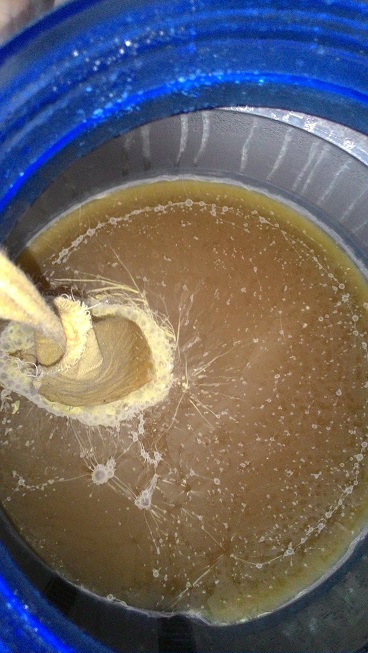
After Dry hoping in secondary for 5 days my fermentor has developed bubbles and the material you can see in the photo. Anyone know what this is?
I sanitized/soaked my Hop sack in StarSan for 5-10 minutes.

brewprint
Well-Known Member
- Joined
- May 7, 2014
- Messages
- 1,616
- Reaction score
- 169
Hi everyone,
After Dry hoping in secondary for 5 days my fermentor has developed bubbles and the material you can see in the photo. Anyone know what this is?
I sanitized/soaked my Hop sack in StarSan for 5-10 minutes.
I don't know what it is but it looks like it's an infection from the bag.
I always use an actual hop bag like a paint strainer bag and I haven't had anything like that ever. It's around $5 or so. Who knows where those bags have been that you have. Starsan probably didn't get to all of the nicks and crannys.
Definitely looks like an infection from the bubbly skin thing around your hop sock. If it smells/tastes good/okay, rack from below, package it up and place in something that will contain any bottle failures and drink quick. Being it is probably a Pale/IPA that shouldnt hurt it any.
Seeing as this is secondary, there are a few places that you could have gotten the infection from. The secondary not being fully sanatized, your racking equipment, that hair that fell off your head as your were leaning over the fermentor, that little bug that could that decided to do the backstroke in your beer.
Seeing as this is secondary, there are a few places that you could have gotten the infection from. The secondary not being fully sanatized, your racking equipment, that hair that fell off your head as your were leaning over the fermentor, that little bug that could that decided to do the backstroke in your beer.
I used to just soak my hop sacks in Starsan, but could sometimes wind up with an infection that looks like that one. So this time I boiled the muslin hop sacks for 5 minutes, then drained them & soaked in Starsan a couple minutes before filling with bourbon soaked oak chips for my whiskely stout. So far, so good in my BB.
Brew_G
Well-Known Member
Agreed with the two above. Also - and this may just be the angle of the picture - but it looks like a ton of space in that secondary.
I got the same impression. My Better Bottle was said to be 6 gallons by the member I traded with. But since 5 gallons fills it to the top ring right where the taper starts, I'm more inclined to think 5.5 gallons? So less head space that is usually a good thing.
Apologize for double posting administrators can remove post on general form, but what do you guys think of my IPA 9% abv in the secondary phase. OG 1.080 FG 1.01View attachment ImageUploadedByHome Brew1435371880.165515.jpgView attachment ImageUploadedByHome Brew1435371898.359233.jpg
Is it infected I did taste it no sour??
Thanks in advance.
Is it infected I did taste it no sour??
Thanks in advance.
Post # 2567 is normal, no worries, m8. That last one looks like some infection got going, but splashed up or moved with krausen?
I had this partigyle stout that I left sitting in the back of a closet in a Mr Beer fermenter for around a month and a half. This is what I saw when I opened it today to bottle:

It tastes pretty good. I went ahead and bottled it and figure I'll throw a stout party in a few weeks. It's only a total of 11 bombers.
Is the Mr. Beer equipment that you used designed to go for a month and a half? The LBK isn't really air tight at all so after primary fermentation they don't want you to leave the beer in it for very long. In fact Mr. Beer's instructions for the LBK typically say 2 weeks then bottle. I haven't used their larger equipment kit. I didn't see a bubbler listed, is one included with that?
I'm glad it tastes ok, give it a shot. Did you rack into the Mr. Beer as a secondary and is it air tight? If not, In the future I think that if you are doing that long of a secondary that you might want to consider racking into a sanitized secondary with bung and bubbler.
-Nyle
Brew_G
Well-Known Member
Is the Mr. Beer equipment that you used designed to go for a month and a half? The LBK isn't really air tight at all so after primary fermentation they don't want you to leave the beer in it for very long. In fact Mr. Beer's instructions for the LBK typically say 2 weeks then bottle. I haven't used their larger equipment kit. I didn't see a bubbler listed, is one included with that?
I'm glad it tastes ok, give it a shot. Did you rack into the Mr. Beer as a secondary and is it air tight? If not, In the future I think that if you are doing that long of a secondary that you might want to consider racking into a sanitized secondary with bung and bubbler.
-Nyle
I wonder if that beer has been tested yet, or if he/she decided to age it...
mbruneaux
Member
I dont see what you are trying to save it from. Condensation on the inside of the carboy is natural and will happen. Water evaporates all the time in fermenters. Heck it even evaporates in your freezer, thats what causes freezer burn. Everything looks okay to me. Does it smell bad? Is there something in particular that is making you antsy?
Also, there is much debate on the need for secondary. I say skip it unless you are oaking/fruiting/extended aging/souring it. But then again what do I know?
mbruneaux
Member
It's hard to see the white crusty bubbles, after I see this the taste is bitter and bandaid tastes.I dont see what you are trying to save it from. Condensation on the inside of the carboy is natural and will happen. Water evaporates all the time in fermenters. Heck it even evaporates in your freezer, thats what causes freezer burn. Everything looks okay to me. Does it smell bad? Is there something in particular that is making you antsy?
Also, there is much debate on the need for secondary. I say skip it unless you are oaking/fruiting/extended aging/souring it. But then again what do I know?
4 days in on this Kolsch and it doesn't look right to me. Thoughts?
View attachment 1435804492529.jpg
View attachment 1435804492529.jpg
Just looks like krausen & yeast floaters to me. No worries.
roastquake
Well-Known Member
This was going to be a weizen-pils but it got infected with something. If it wasn't a lager I would just bottle it up and drink it real quick. 3 weeks in primary, it still just tastes like green lager but no sourness as of yet
I have been thinking about brewing sours for a minute now. So, since I cant drink this for months anyway I want to try to inoculate it with something commercial.
Any suggestions?
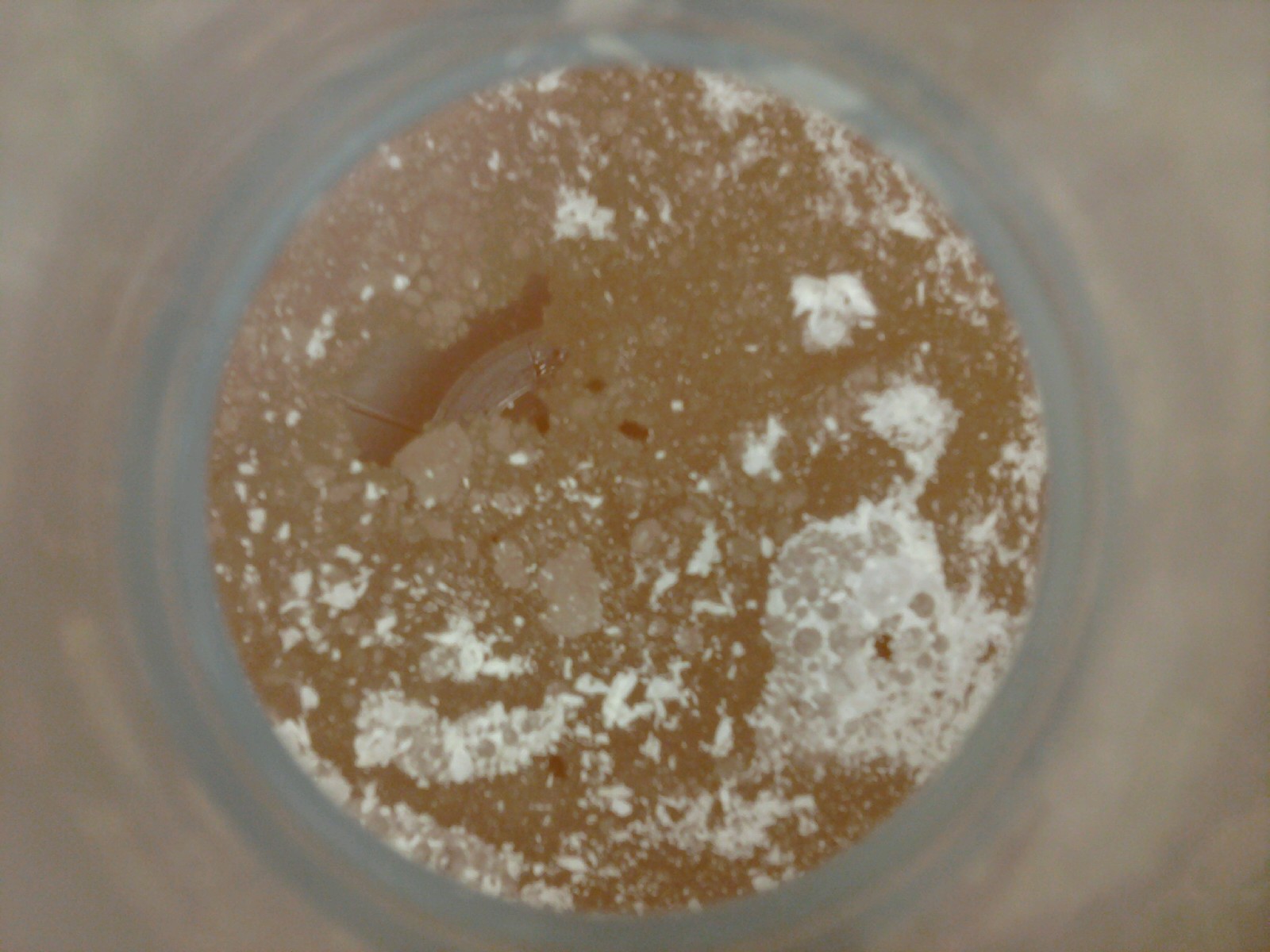
I have been thinking about brewing sours for a minute now. So, since I cant drink this for months anyway I want to try to inoculate it with something commercial.
Any suggestions?

Maybe just let this one ride?
roastquake
Well-Known Member
Update.. It looks really neat now. I may let it ride, unless anyone has other advice. Thinking about throwing in some lacto.
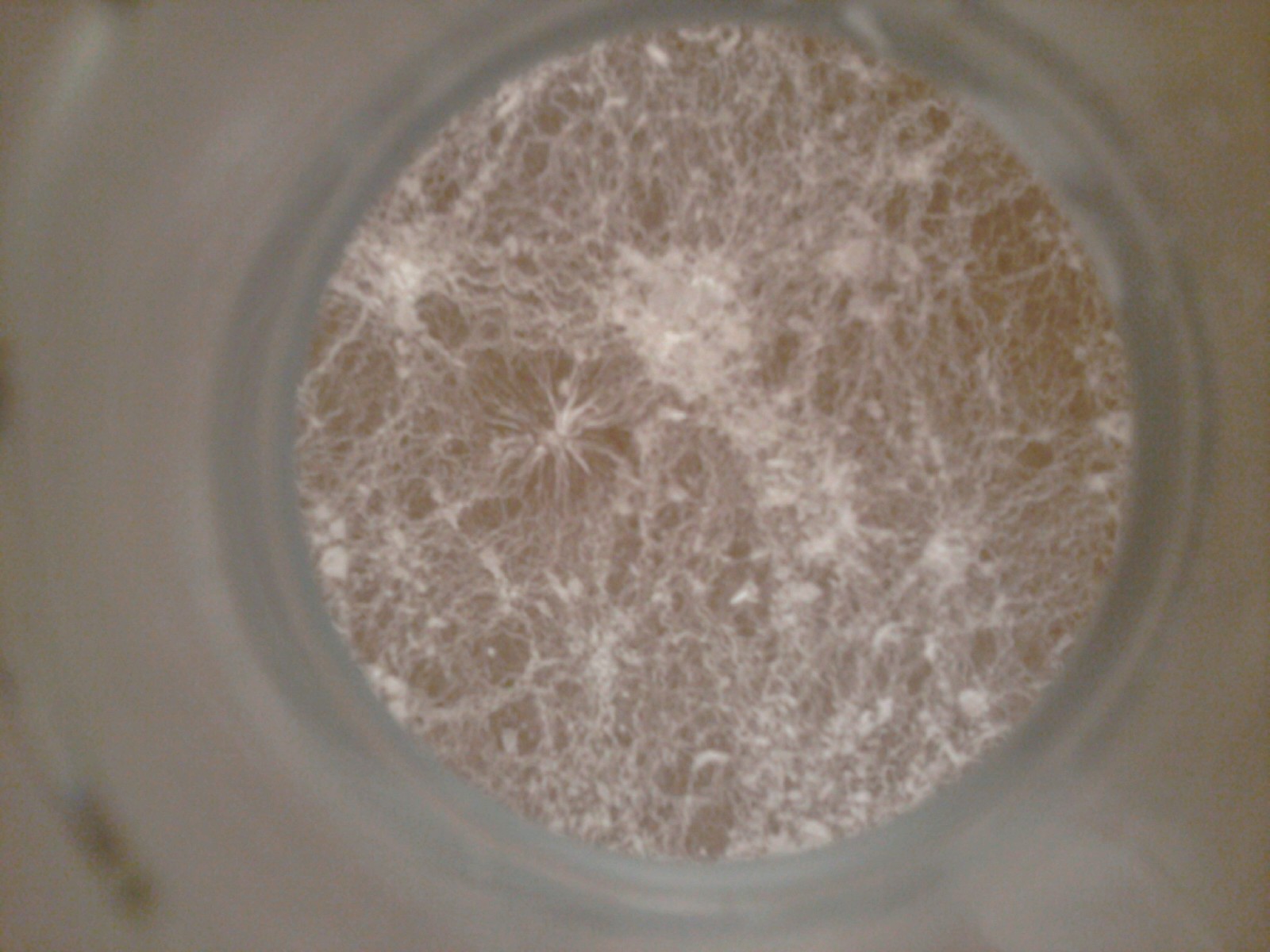

daggers_nz
Well-Known Member
Just looks like krausen & yeast floaters to me. No worries.
you're doing the lord's work
Similar threads
- Replies
- 27
- Views
- 1K
- Replies
- 1
- Views
- 293






























![Craft A Brew - Safale BE-256 Yeast - Fermentis - Belgian Ale Dry Yeast - For Belgian & Strong Ales - Ingredients for Home Brewing - Beer Making Supplies - [3 Pack]](https://m.media-amazon.com/images/I/51bcKEwQmWL._SL500_.jpg)











